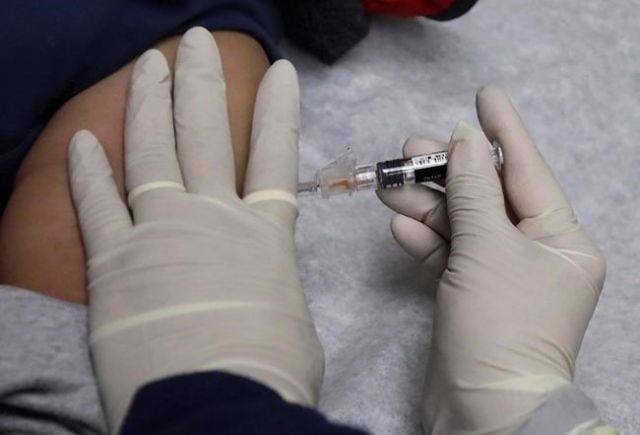
Cases of influenza are continuing to ramp up across the country, with kids and teens bearing much of the brunt of the dreaded winter bug, say infectious diseases experts, predicting that the peak of the annual sneezing-coughing-feeling-miserable season is likely still several weeks away.
This year’s flu season has a far different profile than last year’s: it began earlier and the predominant circulating A strain is H1N1, the viral type that caused the pandemic in 2009-2010 but hasn’t made much of an appearance for the last few years.
Those previous seasons were dominated by H3N2, an influenza A strain that is particularly hard on older adults and which typically carries a higher risk of complications like pneumonia that can lead to hospitalization or death, said Dr. Danuta Skowronski, epidemiology lead of influenza and emerging respiratory pathogens at the BC Centre for Disease Control.
In contrast, H1N1 tends to target children and younger adults more than seniors — and flu-trackers like Skowronski say this season is no exception.
“This year in particular, we have expected that children under 19 years of age and non-elderly adults will be disproportionately affected … children because they are less likely to have protection (built-in immunity) from prior epidemics of H1N1.”
Indeed, the BCCDC’s surveillance of lab-confirmed cases of flu show that about one-third of all H1N1 detections so far this season have been in children nine years of age or younger, even though kids in that age range make up just 20 per cent of the province’s population.
While H1N1-predominant seasons tend to be milder overall at the population level compared to those characterized primarily by H3N2, individuals who get hit with either strain won’t detect much of a difference — both bring on fever, cough, general malaise and achy muscles and joints, she said from Vancouver.
“It’s a different season, different profile. I think this year we can anticipate that emergency rooms, out-patient visits will be greater because younger people are being affected by H1N1, but the overall impact of serious outcomes should be less this year compared to the last couple of seasons.”
As of Dec. 29, the most recent data available from the Public Health Agency of Canada shows there were 13,796 laboratory-confirmed influenza cases across the country, with the provinces and territories reporting 1,046 hospitalizations and 24 deaths. Most cases occurred in people under age 65.
Last season at that point, 11,275 cases of lab-confirmed flu had been reported.
Since September, PHAC says 414 children under age 16 have been hospitalized for flu, with the highest estimated rate of admission among kids under five years of age. That’s more than double the 195 logged during the same period in 2017.
Seventy-one of those kids had to be admitted to the ICU. At least one death has been documented by the network of 12 pediatric hospitals across the country that reports to PHAC, but for privacy reasons the agency does not release the exact number, saying only that there have been fewer than five.
However, these figures reflect only cases in which testing was performed; many more people who come down with the flu don’t seek medical assistance and therefore aren’t tested. That applies to data collected on both adults and children.


